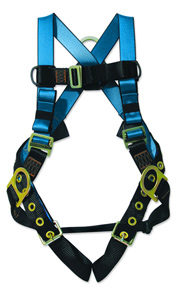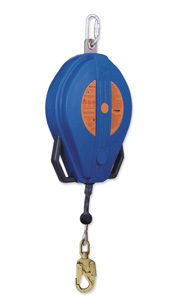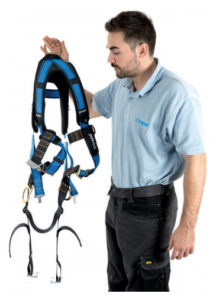
In our line of work, safety regulations are continually evolving. This means that employers face the challenge of staying in-the-know when fall safety regulations are implemented or updated. On top of OSHA regulation updates, there are also technological advances in both the construction industry itself and in active fall protection to understand. With so much information, it can be tough to stay current. That’s why it’s important to periodically separate myth from fact when reviewing your safety plan.
Believe it or not, there’re quite a few myths circulating in the construction and manufacturing industries about active fall protection. Unfortunately, even when you have the best of intentions, these myths can lead to a false sense of security—ultimately leading both workers and their employers astray. Don’t let your team be misled by outdated or misinterpreted information—audit your fall safety knowledge by checking out these 5 common misconceptions today.
1. Myth: The 6-Foot Rule
One common error in the construction industry is known as the 6-Foot Rule. This unfounded rule applies to work being done on a flat surface near an unprotected edge where a fall hazard to a lower level exists. The misunderstanding is that a 6-foot buffer between the worker and the edge is a sufficient distance to work without the use of fall protection. According to OSHA, there is no safe distance from an unprotected side or edge that would render fall protection unnecessary.
In fact, OSHA 29 CFR 1926 Subpart M requires the use of fall protection for construction when working at heights of 6-feet or greater above a lower level. When working near dangerous equipment, Subpart M actually applies regardless of the height. That means working near machinery with exposed drive belts, pulleys, or gears as well as over open vats of degreasing agents or acids requires fall protection regardless of height—or feet—from the machinery.
2. Myth: Serious Injury Only Results from High Elevation Falls

- 4 feet for General Industry Workplaces
- 5 feet for Shipyard Workplaces
- 6 feet for the Construction Industry
- 8 feet for the Longshoring Industry
Wearing PPE when working at low heights can either prevent a fall or arrest it, minimizing the potential for injury. But active fall protection equipment such as employer-provided safety harnesses, safety harness lanyards, and self-retracting lifelines are only effective when they are used correctly.
3. Myth: We Don’t Need Active Fall Protection, We Have A Parapet.

4. Myth: A One-time Training or Online Course is Enough
Employers and workers alike often think that a one-time instruction session is enough when it comes to using a harness and lanyard. Unfortunately, it’s not. A one-time training or online session may not answer questions that arise along the way. Repeat hands-on training not only addresses these questions, but continually ensures that your staff knows how to select, utilize, and inspect their active fall protection equipment—including the safety harness lanyards as well as the body harness itself. What’s more, workers are far more likely to actually wear safety harnesses when it becomes rote.
Keep in mind, OSHA standard 29 CFR 1926.503 requires employers to provide a comprehensive training program for each worker who might be exposed to fall hazards. These trainings should teach workers to identify fall hazards as well as demonstrate how to minimize hazards. As mentioned above, proper use, inspection, and storage of fall protection equipment should also be included in all training programs. Workers who are not expected to wear safety harnesses but might be involved in the installation process should also attend trainings. Fall protection training should be updated and provided anytime that the workplace conditions change: when new equipment is added, new procedures are introduced, or new workers arrive on-scene.
5. Myth: Service Life of Fall Protection Equipment Lasts 5 Years

OSHA standard 29 CFR 1926.140(c)(18) specifies that PPE must be inspected before initial use and during each work shift to identify mildew, excessive wear, damage, or other deterioration. Any questionable or damaged PPE must be removed from service. If the PPE or any of the system’s components like the harness and lanyard have been subjected to impact loading, the system must be immediately removed from service until a competent person can inspect it and confirm its usability.
We know your mind is likely on your current or next project rather than ongoing safety training. But the myths above can lead to dangerous truths, thanks to a false sense of security and/or complacency. Taking time to periodically sort fact from fiction can make a happier, healthier, and more efficient workplace for everyone. At Fabenco, our job is to make safety easier for you. If you’d like to learn more about getting the right fall protection for your next project, whether it’s something as simple as a replacement harness and lanyard or as complex as a full fall safety audit, give us a call. That’s what we’re here for.






